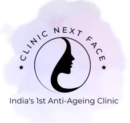Birth Marks : Causes, Types And Management
Table of Contents
ToggleMore than 10 percent of babies have a birthmark of some type.
Highlights
- Both men and women can have birthmarks, also known as beauty marks.
- The prevalence depends on the type of your birthmark.
- You may have got birthmarks because of the proliferation or malformation of pigment cells, i.e., melanocytes or capillaries in fetal development.
- You can have birthmarks because of positive family history.
- Our dermatologist can help in removing your birthmarks. The treatment duration and techniques depend on the location, size, and type of your birthmark.
- Untreated birthmarks may have a variable course. They may increase, ache, itch, bleed, swell, develop into ulcers, and can remove themselves as you grow older.
What Are Birthmarks?
Birthmarks are growths or lesions which show up on your skin at birth or in early childhood. Several birthmarks belong to two categories – pigmented birthmarks and vascular birthmarks. They can be anywhere on your body, face and scalp, and may have different colors, shapes, sizes, and appearances.
Some birthmarks are the same color as flesh but have a different texture than the rest of your skin. While some birthmarks may get bigger with time and stay forever. Some birthmarks may fully fade away. Most birthmarks are safe for your skin but have an inherent medical condition. Birthmarks are rarely cancerous. You can remove them if you want for cosmetic purposes.
Types & Classification Of Birthmarks:
Birthmarks are skin spots visible at birth or shortly after birth. Some birthmarks may show up on the skin in childhood. While, other kinds of marks, like moles, may appear later in your life but they aren’t real birthmarks.
Pigment cells give a natural color to your skin. The excess of pigment cells or melanocytes in an area causes pigmented birthmarks. Vascular birthmarks appear if blood vessels in a specific part of your skin don’t look the way they should. The blood vessels may get broader than they should be or numerous blood vessels cluster in an area.
Find below the types and classifications of birthmarks:
Pigmented Birthmarks
These birthmarks when a part of your skin has more pigment than other parts. Here are the different types of pigmented birthmarks:
Moles (Congenital Nevi)
Moles are of different sizes, can be raised or flat, and are of various colors from black to light brown and pink. Moles can appear anywhere on your body or face. While some moles fade away gradually, others last forever. A change in moles can sometimes cause skin cancer.
Café Au Lait Spots
These spots can be of different sizes and irregular shapes. They are usually pale brown. The darker skin has darker café au lait spots. This kind of birthmark may appear at any time from birth or in early childhood. They may increase in size but fade after some time. Many children have multiple café au lait spots.
Café au lait spots may indicate a rare medical condition called neurofibromatosis. Diagnosis depends on the total number of spots. Many cafe au lait spots can indicate other genetic syndromes.
Mongolian Spots
Mongolian spots are bluish-gray and flat spots that people with naturally dark skin tend to have. They aren’t harmful but sometimes look like bruising. Mongolian spots usually occur on your lower back and butt and are likely to fade away in a few years.
Vascular Birthmarks
When extra blood vessels clump together and form a visible cluster, it is known as a vascular birthmark.
Salmon Patches
Salmon patches are sometimes called stork bites or angel kisses. These pink or red patches tend to develop in the area between the eyelids, eyes, or on your neck’s backside. Clusters of small blood vessels beneath your skin cause salmon patches, which may sometimes fade in color and don’t need medical treatment.
Hemangiomas
Hemangiomas are mostly found on the neck, head, or extremities and look bright red, pink, or blue. They are initially small and flat in shape and sometimes may grow in the first few months getting larger and elevated. They tend to stop growing between six to eighteen months.
Most hemangiomas fade away fully by the time a child is adolescent and leave a pale mark sometimes. Such marks are called strawberry or cherry hemangiomas. Certain fast-growing hemangiomas need medical removal to ensure they don’t disturb a child’s vision or breathing. Children with hemangiomas on their skin need a checkup of their internal hemangiomas.
Port-Wine Stains (Nevus Flammeus)
Abnormal buildup of tiny blood vessels below your skin cause port-wine stains. They can appear on all parts of your body but mainly on your neck and face. Port-wine stains may develop as red or link and then turn purple or dark red.
Port-wine stains don’t fade over time and may get darker without treatment. Your skin may also get very thick and dry, thick, or get a pebbled texture. Those that occur on eyelids may need proper monitoring and medical treatment or monitoring. These types of birthmarks are rarely related to genetic conditions.
What Are The Causes Of Birthmarks?
Birthmarks have as such no reason. Most birthmarks develop for as such no reasons and aren’t the outcomes of inherent medical issues. Certain types of birthmarks can develop as a segment of a big group of medical conditions, known as a syndrome.
Here are the possible causes of different types of birthmarks:
Pigmented Birthmarks
Skin cells, known as melanocytes, produce a pigment called melanin. They are the outcome of the proliferation of pigment cells in an area of your skin.
Vascular Birthmarks
Vascular birthmarks appear because of the incorrect buildup of blood vessels/capillaries. You can find multiple vascular birthmarks clustered in a body part, or they may be broader than usual.
Diagnosis, Exams & Tests
Clinic Next Face can tell what type of birthmark you have through a thorough examination. Our dermatologist can use advanced equipment to see the parts of your skin not visible to the naked eye. If you have multiple birthmarks, our dermatologist may suggest some testing. Many birthmarks can be a sign of something critical occurring in your body.
After the examination, we can tell you the type of birthmark you have and the right precautions and treatment you should opt for. You should consult a dermatologist once you notice a birthmark as that may cause issues later.
Laser therapy is the perfect option to treat a port-wine stain, a type of birthmark that doesn’t go away with time. Surgery can help in cutting out a birthmark and is recommended for a birthmark that can be skin cancer, like a mole. Surgery is usually recommended when a child reaches puberty. It also helps in treating a big raised birthmark that won’t fade away itself.
Are You At Risk?
No, you aren’t at risk with birthmarks as they are harmless and some may even shrink or fade over time. However, birthmarks rarely may be associated with other medical issues or restrict body functioning or health development.
Strawberry marks may transform into open sores at times because of ulceration or infection. The melanocytic nevi, a common type of birthmark, hardly develops into cancer.
Prevention and Management
If you have birthmarks, you should watch them to understand if they change in size, color, or lesion texture. You should consult our dermatologist if your birthmarks ache, bleed, itch, or the mark or lesion swells. At Clinic Next Face, the dermatologist knows how to remove birthmarks.
The treatment method to remove a birthmark depends on the size, type, location, and severity. The most common type of laser used to remove birthmarks is a pulsed dye laser for vascular birthmarks. Not all birthmarks are harmless. The functionally deforming or unwanted symptoms require medical treatment.
Our dermatologist examines big vascular or dermal lesions to assess the risk involved and treat them accordingly. If your body has birthmarks, you should get in touch with Clinic Next Face today to prevent any health complications in the future. We aim to redefine the skincare quality and deliver advanced dermatology solutions.
Treatment Options
A dermatologist can remove birthmarks. Usually, the treatment method for removing a particular birthmark depends on the type, size, severity, location and more. The most common types of laser used for reducing birthmarks are:
- Q-switched Nd:YAG Lasers for pigmented birthmarks
- Pulsed dye laser for vascular birthmarks
Birthmarks are rarely life-threatening. Only marks that are functionally deforming or exhibiting unwanted symptoms need medical treatment. A dermatologist must examine large vascular or dermal lesions to determine the risk they pose and treat them accordingly.
If you have birthmarks on your body, it is critical to consult a dermatologist today to rule out any health complications in the future.
Delivering World-class dermatology solutions is our mission! Redefining the quality of care is a passion!
Talk To Our Skin Experts Today!
No Obligations! Just jump on a quick call with our skin expert and know what kind of treatment will suit you the best.
Either way you will get some actionable tips to reach your skin goals faster.







